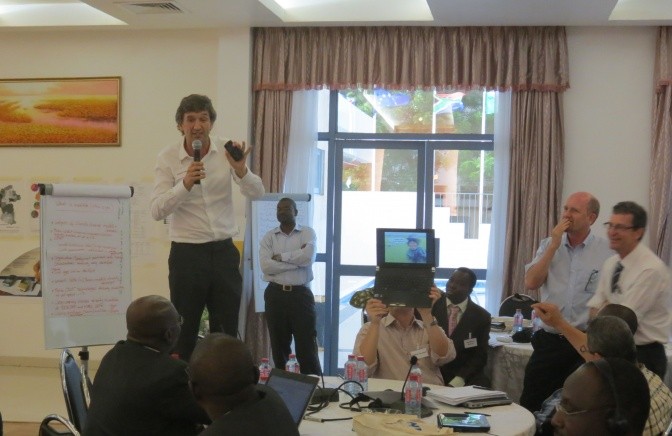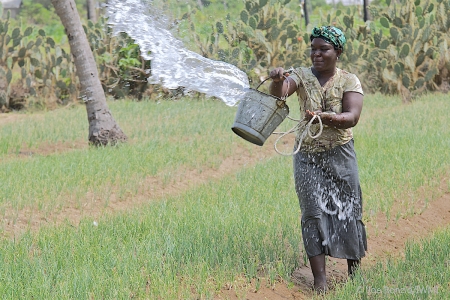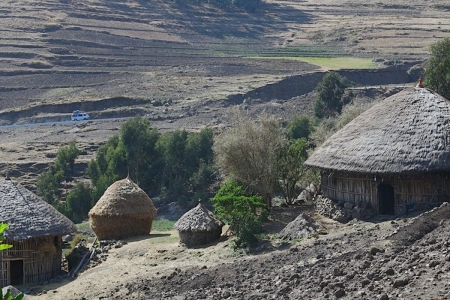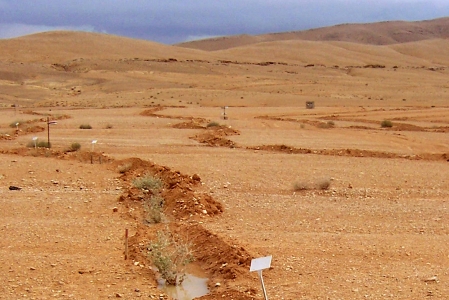Expectations were high for the WLE Design Workshop held in Accra between 28th and 30th May. Perhaps too high.
Was it realistic to map out the priority water, land and ecosystems issues for both the Volta and Niger basins, and define the contribution that could be made by the CGIAR Research Program on Water, Land and Ecosystems (WLE), in only three days? Would we be able to produce ‘integrated theories of change’, as promised in the announcement sent to participants, and could we go even further by producing an outline of a consolidated regional plan of work?
As the facilitator for the event, I had serious doubts that we could achieve all of this in the time available. In fact, as I landed in Accra, I had a feeling in my stomach that reminded me of when I was about to take a bungee jump a few years ago. But just like that jump, I got a big rush out of the workshop, and a huge sense of satisfaction once it was over.
It’s clear that the design of a WLE programme for the Volta and Niger Basins will take more time. But it was amazing how much information could be gathered in three days, and how many ideas could be shared among 40 people, through a process that involved a few presentations, a lot of group discussion, and some very competitive brainstorming!
Perhaps the biggest issue at the workshop was integration. The question presented to me was ‘how do we integrate the work of the research portfolios being implemented by various CG institutes’? This was explained in the blog piece by Alain Vidal and Amanda Harding on 27 May, when he said “Currently, the five WLE research programs propose a lot of silo’d solutions – often working in isolation of each other”
While this is a real problem, it was not one that interested the non-CG experts gathered in Accra. They were far more interested in the question of “how will the WLE integrate with what we are already doing?” Answering this required a shift in perspective for the CG researchers at the meeting, from an internal focus to an external one.
A quick digression: while doing some background reading for this workshop, I came across a wonderful diagram on the IITA website that showed how partner organisations ‘link the program to the real world’. The implication being that CG researchers don’t live in the real world and – furthermore – that they need somebody else to explain it to it them!
For the most part, the workshop in Accra did manage to focus on the issue of external integration, on finding out what is happening in the ‘real-world’ as perceived by experts from a wide range of organisations. Represented at the meeting were the Basin Authorities for both the Volta and Niger, other regional organisations such ARID and 2iE, and a number of national universities and research institutes.
It was not surprising to discover that a huge amount of research and development work is already been carried out in the region. The challenge, as mentioned by Alain Vidal and Amanda Harding in thier blog, is for “WLE to build upon what already exists”. What this means, however, is that the issue of integration can be framed as a series of tough questions regarding the ‘added value’ of WLE. So, for example:
- What can WLE possibly do that has not already been done in the Volta and Niger basins?
- What new ideas, expertise or funding will WLE bring to the region?
- How can WLE enhance the impact of research carried out by other programmes?
- And - let’s be frank about this - how can WLE avoid ‘stepping on the toes’ of organisations that have been working in the region for decades?
WLE researchers may like to believe that resource recovery, resilience, and ecosystem services are some of the new concepts they are bringing to the region. But a quick look at publications from the Institute for Environment and Sanitation Studies (University of Ghana) or the Department for Food Security and Climate Change (University for Development Studies) shows that multidisciplinary research on these issues is already taking place.
 Richard Soppe from ICARDA, standing on a chair,
Richard Soppe from ICARDA, standing on a chair,makes a pitch for greater use of mobile phones to disseminate advice
to farmers. Photo: Andrew Bartlett
Nevertheless, the regional experts at the workshop in Accra had plenty of ideas about how WLE could add value to the work already taking place in the region. And many of those ideas were related to the collection, analysis and dissemination of information. Among the suggestions that came out of one brainstorming session focused on the Niger Basin were: “knowledge management”, “trade-off analysis”, “regional databases”, integrated modelling platforms” and “decision-making frameworks”.
The challenge for WLE is – perhaps – not to generate more data, but to make better use of the data that is already available. Furthermore, the experts at the workshop were convinced that there are opportunities for some quick wins.
In a session focused on the Volta, each group of participants was asked to identify a big idea that could be ready for implementation in the next 3 years; each group then made a ‘pitch’ for their idea during a plenary. All five groups came up with remarkably similar ideas. One was “a single, free, open access, compilation (portal) of all data available”, while another was “an integrated data collection and sharing system… for example an early warning system”. And the winning idea (chosen by me!) was “a full 24 hour information services on all aspects of agriculture via mobile phones across Africa, in partnership with the private sector”.
It remains to be seen if and how these ideas will be incorporated into the WLE programme for the Volta and Niger Basins. But one thing in certain, we don’t need to wait a decade before we see some impact in the real world.

















Comments
Thanks for the article and hope to read from you again. Interesting, clear and precise. Thank you for the info Andrew.